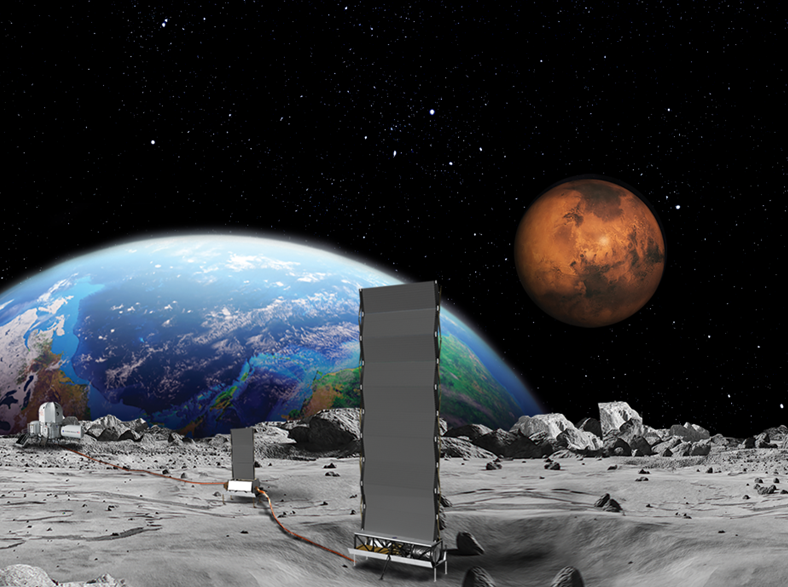MegaSack DRAW - This year's winner is user - rgwb
We will be in touch
You can watch live from 11.30 on space.com's YouTube
About 30 mins to launch - just moved back by 10 mins.
About 50 minutes according to NASA. I switched from Elon's shillfest.
"Don't miss out on this chance to double your bitcoin investment."
Comes across like a deep fake scam!
Don’t think I lasted 30s. Came across as a scam that even he wasn’t buying into - thought he was meant to have at least some charisma?
30 minutes - let’s gooooooooo………
Live coverage finally !
Looking like it's going to go !
The scam sites are annoying.
I'm watching in the NASA spaceflight site. Seems to be legit.
It looks AI or special effects doesn't it?!
Really impressive. Loving the booster falling back to earth at 4000km/h. 😳
Rapid unscheduled disassembly of the main rocket
I think the booster set might have returned to earth slightly quicker than planned...
Live pictures from the craft are great !
I thought they were crashing the booster anyway?
The engine relight didn't do much as there wasn't much fuel left? Should have stopped at the Tesla charging point at the apogee and refilled prior to reentry 😉
It's epic stuff.
I'm watching through the SpaceX website.
I'm assuming the current live feed if from Starship's hold, and they have the cargo doors open, hence the changing light patterns ?
Anyone else hearing the 'lift-music' while it whips along at 26,000kph! 🤣
It's coming back !!
Incredible pictures of re-entry
Wow that plasma, incredible stuff!
Data gone - no telemetry - could be interference
First time I've managed to catch it live!
Somehow it's that much more exciting (and I'm hyped up enough as it is!)
My wife watching me in mild amusement/bemusement haha. It's kinda like that time we were out somewhere and a Spitfire overflew the car... I screech to a halt and leap out to watch in wild excitement while my wife wonders what all the fuss is about.
AMAZING STUFF!!
Saves the sweeping up.
I had a meeting so had to stop watching just after signal was lost with starship At about T +12.30 did it RUD? Or was it just a blip in signal?
Stabilised video showing the true extent of the rotation... 😲
https://twitter.com/ophello/status/1768481359209849070
Scott Manley has done another excellent analysis, worth watching.
I still can't believe starship seemed to reenter, descend, and then 'land' perfectly with such damage to a flap.
Does anyone know if spacex are recovering the starship (and booster)? I'm sure they've got lots and lots of data to go through even without it but I'd love to see photos of it's final condition. In particular did the otherside flap suffer any similar plasma cutting damage? If it didn't, would that point to a construction or material failure rather than a design failure?
As usual I can't wait to see IFT5 now, I wonder when that might be? I'd guess as soon as they've got a ship ready and they've crunched IFT4 data enough to construct test aims for 5. Wonder how quickly they may move to test catching the booster? Although surely they don't need an orbital flight to test that. I guess we will know more fairly soon.
There’s probably multiple redundancy in the flap hinges maybe? So it looked like the trailing edge area took a lot of damage, but there was enough strength in the rest of the hinges/actuators to maintain enough control - more details will forthcoming.
Will they risk a tower capture landing next time!!?
How did it still work and how did the ship do a perfect flip
Well there's 4 flaps and maybe the damaged one had enough surface area left to make a difference. You would have thought they'd like to see the condition of the others but there again they're probably covered in sensors so maybe no need.
Amazing flight .... Starship looked really stable the whole time.
Can't wait the next one!!
Will they risk a tower capture landing next time!!?
Presumably that might depend on how accurate the landing was this time - presuming it had a landing location specified. If it was mine I'd like to see it come down at least one more time first before I risked it taking out the tower that took a fair bit of time to construct!
They have been working on the chopsticks, upgrading the actuators, I believe in preparation for booster catch. They don't need to do a long flight of the booster to catch test, and the booster has had its own flight test series... if I were Chief twit I'd try a catch test on a short booster test flight but spacex are more ambitious and seem to go in fairly big steps so who knows what they will do! Can't wait to see it.
Musk has posted there will be a catch attempt for flight 5 🤯
I'm looking forward to a catch attempt, I hope it works! I've not seen a date for IFT5 yet but doubt it'll be far off, August perhaps?
Elsewhere this isn't so good. NASA confirms space debris in North Carolina was from SpaceX Crew Dragon reentry https://www.space.com/nasa-confirms-debris-spacex-crew-dragon
How often does this kind of thing happen?
I'm looking forward to the catch. Hopefully successful.
I wonder when space X will use the oil rig that they bought a while back? I've not heard anything about it for a while.
I wondered whether anyone else had been reading up on the strange events in Kenya? I saw it a while ago, but it's now on the BBC website.
A large, so hot it was glowing, metal ring fell from the sky. It's been suggested that it could be a separation ring, from an Ariane rocket, whose orbit had decayed.
https://www.bbc.co.uk/news/articles/clyn9dgdwe3o
But I think it's also been reported that the size of the ring doesn't match anymore the Ariane rockets.
Me and Arianne.
I gave up on that article when it drifted into the villagers complaining that they were now all ill because of “space radiation”.
New Glen delayed until Thursday. And Starship 7 is to launch “this week”?
Apparently NASA are going to stick a nuclear reactor on the moon, and the joker in their art department has come up with this concept image.
So it's a black monolith, dimensions look like 1:4:9...
This is where I work, gives a reasonable insight into part of working life at ESOC
As a child of '73 I'm almost as old as possible without having lived when men walked on the moon, so I'm excited by all this moon and beyond stuff.
I was on holiday in South Devon, staying on a caravan site when the actual moon landing happened, the site had a club for those staying, but the telly was in the bar area and I wasn’t old enough to be allowed in, so I missed seeing it. ☹️
Starship IFT 11 went off very uneventfully early this morning. The block 2 problems seem to have been overcome. Next launch is block3 I think, not sure when. I want to see an orbital flight and both booster and Starship return for catch and reuse.... these planned landings at sea are almost boring now!
Just come back to this thread, started at the beginning and watched some of the footage, in particular the bloke who’s talking about the sound, so I put my headphones on, which are wired, and had a listen. He’s certainly right about the sort of sound that happens, but even with ‘phones on, and the volume up a fair bit, it can’t convey the physical feeling that sound of that amplitude creates, where the human body emphasises the fact it’s mostly liquid, and vibrates in sympathy!
The crackling effect, especially in the closer footage, really does come across through ‘phones, though; whatever Musk’s flaws, and there are a great many, he’s certainly put together a spectacular heavy lift system, and I’d dearly love to witness one in person!

